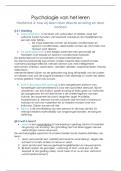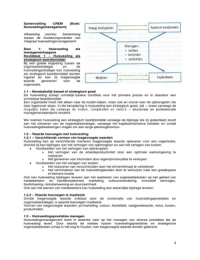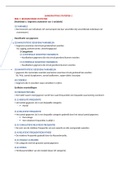CM1010-Intercultural Communication
Book + Lecture Summary
Week 1
Chapter 1 – Approaching Intercultural Communication
Three studies coming under the heading “intercultural communication” are described:
➢ Study 1: an investigation of the ways in which British and Italian service staff of an
airline respond to service failure;
• Both British and Italian staff were similar in their behavioural responses to
service failure; the two groups reported, however, different attitudes towards
customers affected by service failure – i.e. Italians would bent the rules for
compassionate cases, British workers would not
The study conclude that attitudes are more influenced by culture and not as
amenable to training as behaviour
➢ Study 2: concerned with the ways in which Korean immigrant shop-keepers in Los
Angeles interact with their African-American customers;
The researcher explains the persistence of divergent communicative styles with
reference to the wider socio-historical context in which the two groups interact:
there is a long history of racial tensions between immigrant shop-keepers and
African Americans in some low-income LA neighbourhoods and against this
background each interaction is turned into a micro-enactment of prior conflicts
➢ Study 3: concerned with the ways in which people who live in tourist destinations are
being represented in travel writing;
Representational strategies are part of turning a place into a tourist destination: not
a place where real people, part of a complex society, lead their lives, but rather a
place where people are specimens of a particular culture and where it is safe for
the tourist to go and gaze at people as a tourist attraction
The three studies are concerned with quite different objects of enquiry and on different
understandings of intercultural communication
➢ Study 1 compares attitudes and communicative behaviours of service workers from
different ‘cultural’ backgrounds, where culture is understood as identical to nation
- Cross-cultural communication – such studies start from an assumption of distinct
cultural groups and investigate aspects of their communicative practices
comparatively
➢ Study 2 studies different cultural backgrounds in interaction, and culture is seen as
similar to ethnicity and/or race
- Intercultural communication such studies start from an assumption of cultural
differences between distinct cultural groups but study their communicative
practices in interaction with each other
➢ Study 3 investigates how cultural belonging is discursively constructed→culture as
the product of the text instead of a social variable
- Inter-discourse communication avoids any priori notion of cultural identity;
instead, it asks how culture is made relevant in a text or interaction and how
cultural identity is brought into existence through text and talk
, 1. Culture → Communication (Culture influences communication) – i.e. “when the
French want to say 100 things, they will verbalize 150 things; When Japanese say 70
things, they are trying to get the other person to understand 100”
- Underlying assumption: Culture within this approach is often seen as a fixed
entity that shapes and precedes communication styles of all members that are seen
as part of that culture
- This approach is seen as taking an entity/essentialist approach of culture →
culture as something one has and one belongs to
- Major drawback : Reality is more complex than that; i.e. people may identify
with different cultures, and cultures change over time
2. Communication → Culture (Communication constructs culture and cultural
difference) – A process/social constructionist understanding of culture;
Communication is a social practice that socially construct culture
When distinctions between the three traditions are unnecessary and the field is referred to as a
whole we will us intercultural communication as an umbrella term
Definition of Culture - Culture should not be considered as something that people have but
something that is created and recreated through text and talk
➢ No definition exists and the term means many things to many people → a key task for
intercultural communication research is to explore how culture is used by specific
people for specific purposes in a specific context
➢ Fundamental as a research question in this field is to ask ‘who makes culture relevant
to whom in which context for which purposes???’
➢ Content – what is it that ‘culture’ comprises? – three context in which culture
becomes evident
• Culture as a national asset is linked to what is often called high culture:
history, the arts, and festivals; there is at the same time popular culture, such
as folklore, belief systems and particularly cuisine
• Culture as a challenge is mostly about interpersonal relationships and how
these are communicated verbally and non-verbally
• Culture as cultural citizenship culture as consisting of practices that are
widely seen as signifying a particular identity – i.e. sexual practices, dress
codes…
➢ Those various contents of culture include some people and exclude others →
exclusionary character of culture
➢ Scope – exclusion and inclusion – the identity work that culture does – become
apparent only relative to the scope of a definition of culture
All three aspects have something in common: they take the nation as the basic unit of culture;
taking the nation or another large group based on social variables as the unit of analysis in
much of the I.C. literature is inevitably simplistic and has a number of theoretical and
practical consequences
What is the status of culture? - We would arrive at a different understanding of culture if
we treated as a verb – to do culture;
➢ Brian Street argues that ‘culture is a verb because is an active process of meaning
making and contest over definition, including its own definition
• If we treat culture as something people do, then its status changes from an entity
to a process; the entity understanding of culture is essentialist: it treats culture as
, something people have or to which they belong; the process view of culture is
constructionist perspective: it treats culture as something people do as opposed
to having culture, which they perform, and, crucially, compete over → culture as
a process/social construct that is made relevant and gains meaning in and through
practices including communication
The view of culture espoused here and grounded in the anthropological and sociological
traditions is that ‘culture is not a real thing, but an abstract and purely analytical notion; it
does not cause behaviour, but summarises an abstraction from it, and is thus neither
normative nor predictive
, Chapter 2 – The Genealogy of Intercultural Communication
Discourses of culture, cultural difference and intercultural communication arose in the
historical context of the nineteenth and twentieth centuries as part of the processes of
colonialism; the salience of intercultural communication in the present period is itself an
aspect of globalisation and, at the same time, it is a response to globalisation.
It was a key assumption of early anthropology that cultures formed a cline and that each
culture was located somewhere on a specific point on a general path of human development
from savagery to civilisation; the comparative study of cultures was supposed to serve the
purpose of illustrating various points on this cline; frequently quoted example of this new
meaning of culture comes from Edward B. Taylor
➢ Taylor argued that ‘cultures’ could be scientifically measured by comparison with
each other – hierarchically ordered with the European culture being the most superior
➢ The emergence of anthropology as an academic discipline and the spread of a new
central meaning of culture as ‘a particular way of life, whether of a people, a period, a
group, or humanity in general’ occurred in the context of the development of the
modern nation state, the Industrial Revolution, nineteenth-century colonialism and its
twentieth-century extension, globalisation → a context in which increased travel led
to an increased awareness of different peoples and where the subjugation and
exploitation of those people needed to be morally justified: their assumed cultural
inferiority together with the assumption of a developmental path from savagery to
civilisation provided the moral justification for colonialism;
• Orientalism: stereotypical and essentialist depiction of the East by and for the
West; form of exerting dominance over others by ‘making statements about
(them), describing (them), by teaching (them), ruling over (them)…
➢ Such examples are over a century old; though we should not dismiss them as
irrelevant because traces of the orientalist view of the cultural other can still be found
in contemporary discourses
• Education in Orientalism: an education in a particular way of viewing the world
where the foreign other is always defined by their national identity and destined to
offer a stereotypical spectacle for the Western viewer; this new meaning of culture
was not only part of the justification of colonialism, but it made colonialism as a
civilising effort a moral obligation, the white man’s burden – cultural difference
and cultural superiority became central aspects of European and North American
understandings of the wider world
Multiculturalism - Another discourse traced back to the work of Franz Boas has emerged on
the conception of different cultures and cultural difference, but which does not consider some
cultures inferior or superior to each other
• Multiculturalism: cultural difference as a form of diversity that is enriching and
that is a cause for celebration; relating to a society consisting of a number of












